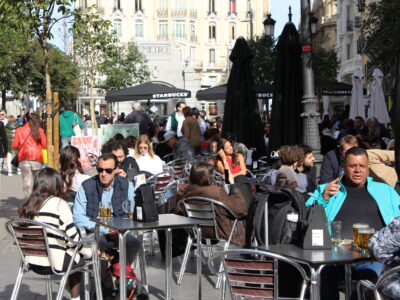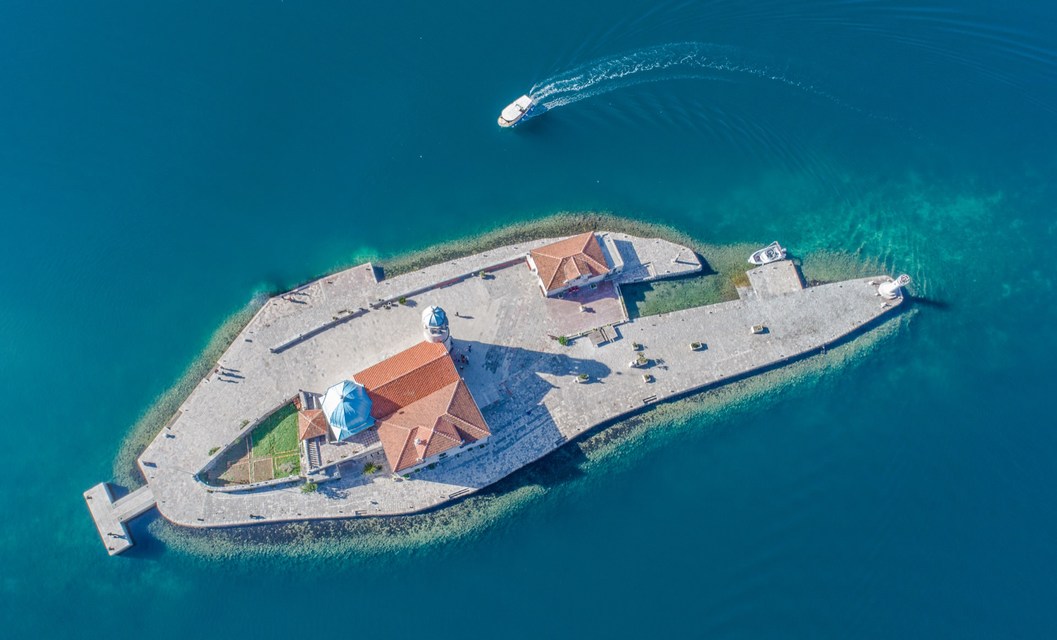
Church of Our Lady of the Rocks, Perast, Montenegro
Post-pandemic travel trends point that when Indians start travelling, especially the affluent ones, they will prefer niche, uncrowded destinations. Let us find out if the smallest child of erstwhile Yugoslavia, Montenegro fits the bill.
Even a frequent international traveller may stumble on the world map to point out this country that has remained unchartered, at least in India. Montenegro is neither in Latin America though the name did originate from there, nor is it near Russia, though Montenegrins do have a strong Slavic accent.
Montenegro means the black mountain and it is a mountainous country. A petite nation in south-eastern Europe, bordering Croatia and across the Adriatic Sea from Italy, but packed with a lot of Mediterranean energy.
About an hour away from Rome by plane, less than two from Paris or Istanbul, or five from Dubai, Montenegro is the place where you can go for a swim in the sea and go hiking on the snowy mountain tops in one day.
With the deepest canyon in Europe, the biggest lake in the Balkans, the longest underground river and one of the last rainforests in Europe, the oldest olive tree as well as the last pelican resort, the tiny country enjoys two different climates: the coast has a pleasant Mediterranean climate with 240 sunny days a year. Summers are hot and dry while winters are mild and wet. Podgorica, the capital city, is one of the hottest in Europe during summer with temperature sometimes above 40ºC.
Visas may be obtained from diplomatic and consular posts of Montenegro in India. If an applicant is unable to reach a diplomatic or consular post of Montenegro, she may apply for a visa at the Embassy of the Republic of Serbia in New Delhi. Podgorica, which also has its main airport, is located in the heart of the country. It’s a 30-minute drive to the coast and an hour to the nearest mountain resorts. Also, airport in Dubrovnik, though in Croatia, is only 15 minutes away from the Croatia-Montenegro border, could be another optimal choice, especially if someone wants to explore both countries’ coastlines. The country may be small but has places to see in abundance. Montenegro is a typical family vacation destination.
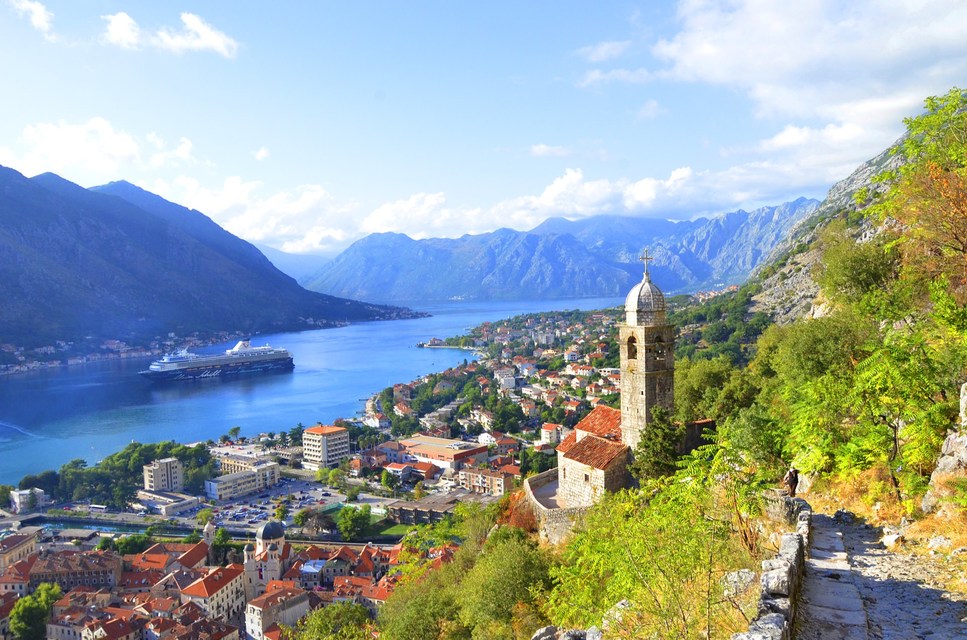
Kotor, Montenegro
Kotor is the anchor between the grey mountains and the sea. It is a dramatic town where the old part lies in a maze of medieval churches, cathedrals, Venetian palaces pillars and museums complemented with the multitude of narrow streets, squares, markets and stylish gates. Gospa od Skrpjela (Our Lady of the Rocks) is one of two gorgeous islands in the bay of Boka Kotorska. Perast is one of the strangest and by its history one of the most beautiful places in Kotor bay. Today it is often called the quietest town in Boka with its narrow streets and numerous, mostly abandoned renaissance and baroque palaces.
Once a small and quiet coastal town, Budva is now a key attraction of Montenegro and one of the loudest and most packed towns at the Montenegrin coast during the summer. With luxurious yachts, new buildings, restaurants, bars and nightclubs, Budva is the new Hawaii with beautiful beaches and seafood specialities. In the evening, on the promenade along the beach one will be overwhelmed by the loud music that comes from the cafes, the laughter and screams of children from nearby amusement parks, the scent of the sea mixed with the aroma of delicious barbeques and beams of light from discos that criss-cross the sky. Budva is a big light show perfect for families. Sveti Stefan, another island, is best known as a fashionable summer resort for elite tourists and for the tourists seeking glamour.
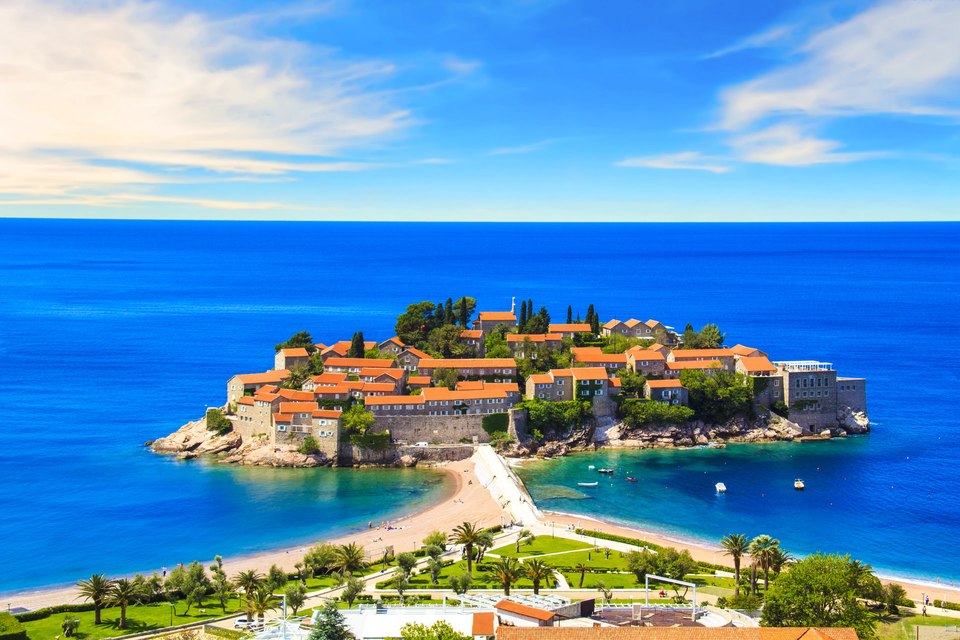
Sveti Stefan, Montenegro
Resembling Monaco with super luxury yachts lined out in a posh marina, high-class promenade and ritzy apartment blocks, polished restaurants and shops in Tivat went through a major remodelling and today it is a place where the world’s jet-set resides and rests in the summertime. Although a big portion of Tivat is modern and glamorous, one can find traces of history at the Renaissance Summer House Buca in the centre of the city, Ostrvo Cvijeca with sacred monuments, Gornja Lastva, the old nucleus, the magnificent beach at Plavi Horizonti and Sveti Nikola Island. For hiking, mountain biking, or extreme canyon adventures, Vrmac mountain overlooking Tivat offers its slopes and a canyon to be conquered. One can also go snorkelling in the Blue Cave, one of the most popular attractions that can be reached only by boat, or visit Mamula, a fortified island with the most beautiful sunset. Porto Montenegro today represents a real example of one of the most beautiful destinations with luxury packaged in a Mediterranean style.
Zabljak is the highest city in the Balkans and is located in the centre of Durmitor mountain and in the middle of a national park bearing the same name. Zabljak represents a destination for winter tourism. In its vicinity is the deepest canyon in Europe, on the Tara River, where white water rafting is an attraction for extreme sports fans and one of the best things to do in the country. The glacial Black Lake in Durmitor National Park with more than a 3-km-long walking path around the lake is popular for hiking and recreations.
Cetinje is a treasure of Montenegrin cultural and historical heritage. The most impressive and very mystic of all is a mausoleum of Petar II Petrovic Njegos, the Prince-Bishop, poet and philosopher of Montenegro whose works are widely considered as one of the most important in Serbian and Montenegrin literature. Up to the mausoleum, on Lovcen mountain, one can come by car from Cetinje, which is 13-km away. In the immediate vicinity of Cetinje monastery is Njegos’s residence popularly known as Billiard Palace.
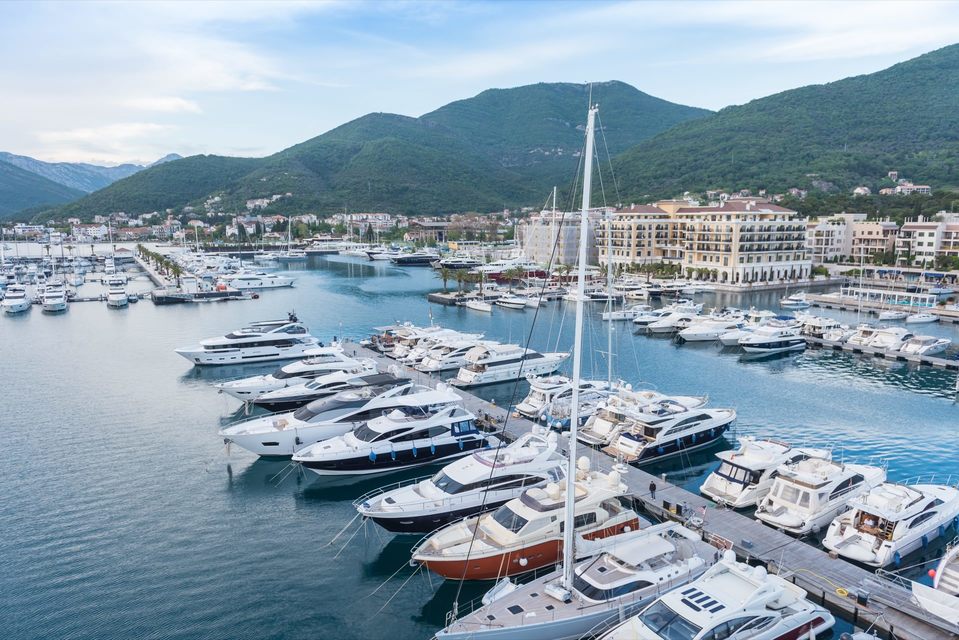
Porto Montenegro
It is interesting to note that despite the fact that not a lot of Indians throng this country, but Indian restaurants quite popular amongst the locals and tourists. The local food is on the line of continental and the servings are huge. The coastal cuisine is dominated by fish, seafood, and olive oil, flavoured with bay leaves, parsley, lemon and garlic. The old Montenegro flavour inhabits central part of the country which is dominated by the taste of smoked ham, Njeguški cheese and Skadar Lake dishes, such as eel and smoked carp. In here one can ask for King Nikola’s pancakes, made from corn flour, filled with walnuts and local honey, and sprinkled with a sauce made from dried plums cooked in wine. In the mountains, food is heavier, with roasted meat and vegetables. Kačamak is a polenta-based dish mixed with potato, cheese and kajmak (similar to thick cream), and is a must for keeping the energy up for mountain hikes.
Montenegro is a destination offering a variety of attractions and all-year tourism. Less than two months after detecting its first infection in March, Montenegro claimed to be the first country in Europe to declare itself coronavirus-free, a success story the tiny country hopes will lure tourists to its dazzling Adriatic coast in the coming days.









